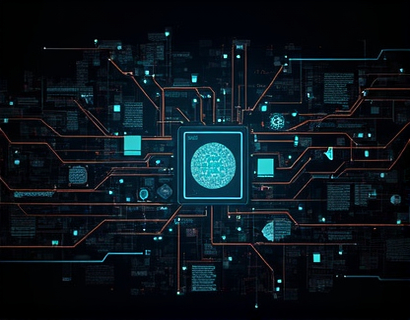Cryptocurrency Security: Tailored Elite Defense for HNWIs, Celebrities, and Entrepreneurs in the Digital Age
In the rapidly evolving digital landscape, high-net-worth individuals, celebrities, and cryptocurrency professionals face unique and sophisticated cyber threats. The rise of cryptocurrencies has opened new avenues for wealth storage and transaction, but it has also attracted malicious actors who seek to exploit vulnerabilities in digital assets and personal data. This article delves into the critical importance of elite cybersecurity tailored specifically for these high-risk groups, focusing on advanced defense strategies and operational security measures to ensure the protection of their digital assets and personal information.
Understanding the Threat Landscape
The cryptocurrency sector is a prime target for cybercriminals due to the decentralized and often anonymous nature of blockchain transactions. Hackers employ a variety of tactics, from phishing and social engineering to exploiting software vulnerabilities and launching denial-of-service (DoS) attacks. For HNWIs, celebrities, and entrepreneurs, the stakes are particularly high, as their digital assets can be worth millions, making them prime targets for sophisticated cyberattacks.
One of the most insidious threats is phishing, where attackers masquerade as trusted entities to trick individuals into revealing sensitive information or credentials. Given the high profile of these individuals, phishing attacks are often highly personalized and difficult to detect. Additionally, social engineering tactics are used to manipulate individuals into divulging confidential information or performing actions that compromise security.
Advanced Defense Strategies for Cryptocurrency Assets
To counter these threats, elite cybersecurity solutions must be multifaceted and proactive. The first line of defense involves implementing robust security protocols for cryptocurrency wallets and exchanges. This includes using hardware wallets with strong physical security features, enabling two-factor authentication (2FA) for all accounts, and regularly updating software to patch known vulnerabilities.
Another critical strategy is the use of cold storage solutions. Storing a significant portion of digital assets offline minimizes the risk of online attacks. Cold wallets, such as hardware devices or paper wallets, provide a secure environment for keeping cryptocurrencies out of reach from internet-connected threats. It is essential to store private keys in secure, tamper-proof locations and to use secure methods for backing up these keys.
Operational Security Measures
Operational security (OpSec) is a comprehensive approach to protecting information and assets by managing how information is collected, stored, and shared. For HNWIs, celebrities, and cryptocurrency professionals, OpSec involves a series of best practices designed to reduce the risk of information leaks and unauthorized access.
One key aspect of OpSec is the implementation of strict access controls. This means limiting access to sensitive information and systems to only those who absolutely need it. Regular audits of access permissions and the use of role-based access control (RBAC) can help ensure that only authorized personnel have the necessary privileges.
Encryption is another fundamental component of OpSec. All sensitive data, both in transit and at rest, should be encrypted using strong, industry-standard algorithms. This includes emails, files, and database entries. Additionally, secure communication channels, such as encrypted messaging apps and virtual private networks (VPNs), should be used for all sensitive communications.
Cybersecurity Training and Awareness
Human error remains one of the most significant vulnerabilities in any security framework. Therefore, continuous cybersecurity training and awareness programs are essential for high-risk individuals. These programs should cover a range of topics, including recognizing phishing attempts, safe browsing practices, and the importance of maintaining strong, unique passwords for each account.
Simulated phishing exercises can be particularly effective in training individuals to identify and respond to real threats. By regularly testing and reinforcing these skills, individuals can significantly reduce the risk of falling victim to cyberattacks.
Incident Response and Recovery
Despite the best defenses, no system is entirely immune to breaches. Therefore, having a robust incident response plan is crucial. This plan should outline the steps to be taken in the event of a security breach, including containment, eradication, and recovery processes. Regularly testing and updating the incident response plan ensures that the organization is prepared to handle any incident efficiently and effectively.
Recovery from a breach involves not only restoring systems and data but also conducting a thorough post-mortem analysis to identify the root cause and implement measures to prevent future incidents. This includes updating security policies, enhancing monitoring capabilities, and improving overall security posture.
Leveraging Advanced Technologies
Emerging technologies offer new tools and methods to enhance cybersecurity for high-risk individuals. Artificial intelligence (AI) and machine learning (ML) can be used to detect and respond to threats in real-time, identifying patterns and anomalies that traditional security systems might miss. These technologies can analyze vast amounts of data to predict potential attacks and automate response actions.
Blockchain itself can be leveraged for enhanced security through the use of decentralized identity verification and secure transaction protocols. By utilizing blockchain-based solutions, individuals can gain greater control over their digital identities and transactions, reducing the risk of unauthorized access and fraud.
Partnering with Cybersecurity Experts
Given the complexity and evolving nature of cyber threats, partnering with specialized cybersecurity firms can provide an additional layer of protection. These experts bring a wealth of knowledge and resources to the table, offering tailored solutions that address specific vulnerabilities and threats faced by HNWIs, celebrities, and cryptocurrency professionals.
Regular security assessments and penetration testing conducted by these experts can help identify and mitigate potential weaknesses in the security infrastructure. Additionally, ongoing monitoring and threat intelligence services can provide real-time insights into emerging threats, allowing for proactive defense measures.
Conclusion
The digital age has brought unprecedented opportunities but also significant risks, particularly for high-net-worth individuals, celebrities, and cryptocurrency professionals. By implementing advanced defense strategies and operational security measures, these individuals can better protect their digital assets and personal data from sophisticated cyber threats. A comprehensive approach that combines robust security protocols, OpSec practices, continuous training, incident response planning, and leveraging advanced technologies is essential in today's complex digital landscape. Partnering with specialized cybersecurity experts ensures that these high-risk groups have the best possible defenses in place, allowing them to navigate the digital world with confidence and peace of mind.










































